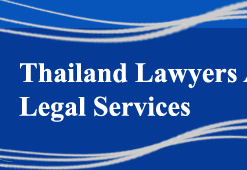



    |
|
| |
|
Open Regionalism and Deeper Integration: The Implementation of ASEAN Investment Area (AIA) and ASEAN Free Trade Area (AFTA)
Part 6
Thus ASEAN practice raises questions about the compatibility of ASEAN schemes with GATT/WTO obligations since AFTA was notified under the "Enabling Clause". One is concerning the status as developing countries of some ASEAN members
(43)and the other is the reverse grant(44)of preferences to GATT/WTO contracting parties. ASEAN should resort to Art. XXIV of GATT in the implementation of AFTA instead of the Enabling Clause, since in practice ASEAN has already implemented AFTA according to Art. XXIV of GATT rather than according to the "Enabling Clause". The implementation of AFTA under Art. XXIV may enable ASEAN countries to realise intra-ASEAN integration while they also integrate themselves into the world economy by implementing "Open Regionalism" or in the other words, to balance regional preferences with generalised liberalisation. An FTA under Art. XXIV needs to be compatible and consistent with the GATT principles that encourage global liberalisation. Therefore, regionalisation under Art. XXIV is complementary and interactive with generalised liberalisation. This is, in fact, the main aim of ASEAN's regionalisation, in balancing regional integration with the strengthening the integration of ASEAN economy into the global economy. This point leads to the consideration of the critical ASEAN policy changes, which would result in the strengthening of the ASEAN legal and institutional framework for the proper form and pattern of regionalisation in ASEAN. It is clear that ASEAN is committed to "Open Regionalism" because its economic interests lie outside the region. In fact the deepening and widening of ASEAN regionalisation is almost entirely inspired and promoted by the achievements of the WTO (Pelkmans, 1997: 230).Most recently, the launching of the Framework Agreement on ASEAN Investment Area (AIA), the ASEAN Framework Agreement on Services (AFAS), and the Framework Agreement on Intellectual Property Rights aims to liberalise trade and investment in the region, and signal the crucial turning point of ASEAN to achieve closer economic co-operation that even goes beyond AFTA. I now turn to a discussion of these new agreements.
Framework Agreement on the ASEAN Investment Area (AIA)
Background and Nature of the Agreement
The Framework Agreement on the ASEAN Investment Area was signed on 8th October 1998 aiming at the establishment of "the ASEAN Investment Area". This was a result of the decision made in the fifth ASEAN Summit
(45), which called for the establishment of a regional investment arrangement to enhance the attractiveness of the region for direct investment flows. The establishment of AIA also pursues the objective of the Framework Agreement on Enhancing ASEAN Economic Co-operation signed in Singapore on 28th January 1992(46).The objective
(47)of the Framework Agreement on AIA is to establish a competitive ASEAN Investment Area in order to "attract greater and sustainable levels of FDI into the region and to realise substantially increasing flows of FDI from both ASEAN and non-ASEAN sources by making ASEAN an attractive, competitive, open and liberal investment area"(48). The agreement binds the member countries to "progressively reduce or eliminate investment regulations and conditions, which may impede investment flows and the operation of investment projects in ASEAN"(49)and to ensure the implementation of AIA within the agreed time frame. The agreement on AIA provided three pillars of broad-based programs for encouraging investment in the ASEAN region:1) co-operation and facilitation;
2) promotion and awareness;
3) liberalisation(50)._______________________________________________________________
(43)Singapore has been regarded as more developed than the other ASEAN members and Singapore has been graduated from GSP due to the fact that its developing country status is untenable.
(44)Davidson has pointed out that "The question becomes one of the role of a developed country participating in such scheme with developing countries. The enabling clause provides for the regional or global arrangements entered into among less developed contracting parties. Although the enabling clause also enables a developed country to give preferences to trade coming from developing countries, it does not permit the reverse, that the preferences to be given by developing countries to trade coming from developed countries. Moreover, such preferences have to be on a non-discriminatory basis in accordance with the Generalized System of Preferences". Thus it would appear that a developed country couldn't enter into a free trade area on the basis of the enabling clause. See Davidson, 1997b.
(45)The fifth ASEAN Summit was held in December 1995, in Bangkok, Thailand.
(46)The preamble of Framework Agreement on AIA reaffirms the importance of sustaining economic growth and development in all member states through joint efforts in liberalizing trade and promoting intra-ASEAN trade an investment flows enshrined in the Framework Agreement on Enhancing ASEAN Economic Co-operation.
(47)Art. 3: Objectives of the Framework Agreement on the ASEAN Investment Area.
(48)Joint Press Release, Inaugural Meeting of the ASEAN Investment Area (AIA) Council, 8th October 1998, Manila, the Philippines.
(49)Art. 3 (iv) of the Framework Agreement on the ASEAN Investment Area.
(50)This results from the Meeting of the 4th ASEAN Heads of Investment Agencies, 24th July 1998, Singapore, Joint Press Statement. paragraph 6. They are incorporated in the Framework Agreement on AIA Art. 6 (1) (a), (b), (c).